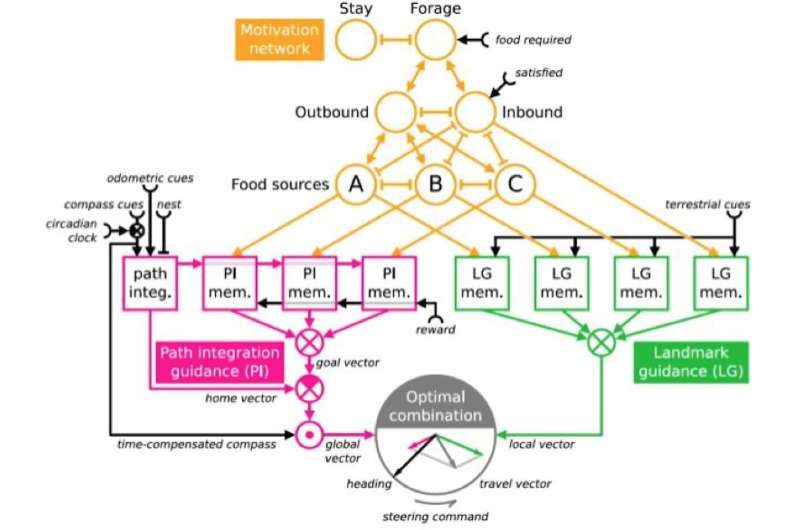This article has been reviewed according to Science X's editorial process and policies. Editors have highlighted the following attributes while ensuring the content's credibility:
fact-checked
trusted source
proofread
The significance of the mesoscale in multiscale neuroethology modeling

From the smallest, microscales to large, macroscales, the workings of many systems can be understood at multiple levels. Growing evidence suggests that the mesoscale, which connects the two extremes, is a good starting point when trying to build an ontology or complete understanding of a system.
In a paper in Philosophy of Science, Julia Bursten (University of Kentucky) and Santa Fe Institute Postdoctoral Fellow Kelle Dhein add to that argument, highlighting the importance of the mesoscale through a case study of modeling insect behavior at multiple scales.
Most insect-cognition researchers agree on the macro and microscale models that describe how insects navigate the world—the neurons and brain structures at the microscale and the behaviors and flightpaths at the macro. But, as Dhein described in a paper earlier in 2023, the field has been divided for decades over what happens in between—how insects transpose environmental stimuli and memories into behavior. That divide, the authors write, "is best understood as a mesoscale disagreement."
On one side of the debate is a "cognitive map" model where insects learn and store knowledge as they explore and forage. It assumes insects build sophisticated representations of their environments that depend on them being able to answer the question "Where am I?" in order to navigate. On the other is a "toolkit" model where insects collate sets of independent task-specific instructions to make a decision about where to go next without needing to know their own precise location.
It's an unusual, and new, finding that models of multiscale systems can converge at both the micro- and macroscales while varying at the mesoscale. "In the world of physics and material sciences, you don't get situations where people agree on the micro and macro but disagree on the middle," says Dhein. "But that's what's happening in the insect cognitive debate."
Viewing the divide as a mesoscale disagreement offers a novel perspective, write the authors, one that reveals origins rooted in two unique schools of thought—one from American experimental psychology and the other from German ethology. Assumptions about the dynamics of the mesoscale matter: they will determine what follow-up questions a researcher might ask, and how they will approach new experiments and interpret the results.
"There are a lot of decision points in science and a lot of ways to go about trying to answer a question," says Dhein. Given the importance of the mesoscale, and the fact that different scales display different characteristics, the middle might be exactly the right place to being building an ontology for a system.
More information: Julia R. S. Bursten et al, Multiscale Modeling in Neuroethology: The Significance of the Mesoscale, Philosophy of Science (2023). DOI: 10.1017/psa.2023.12
Provided by Santa Fe Institute


















